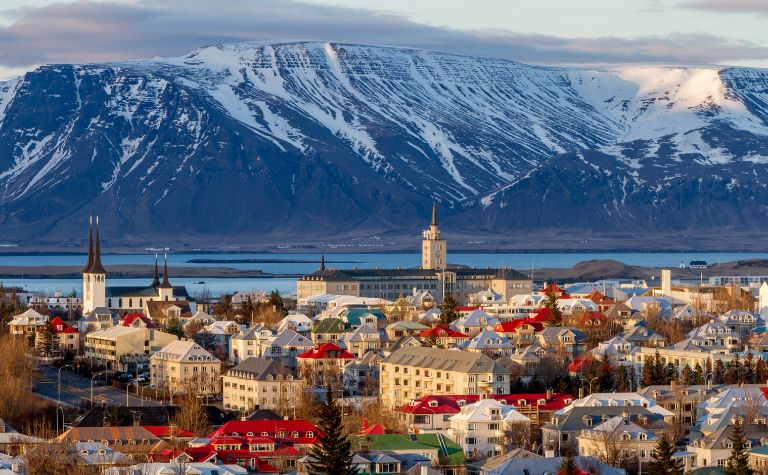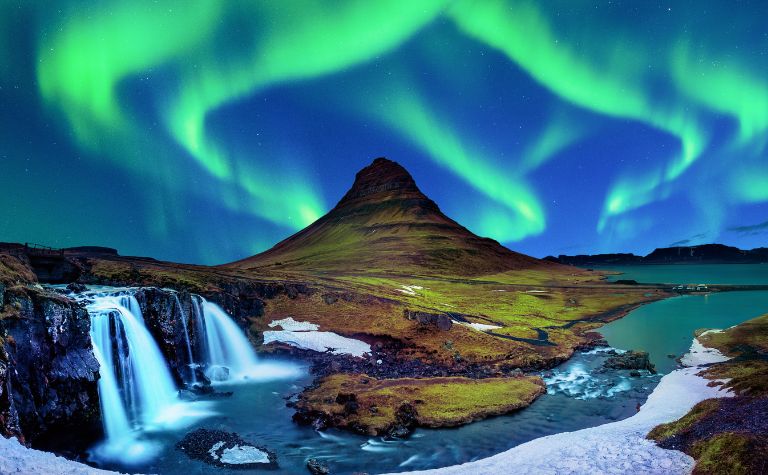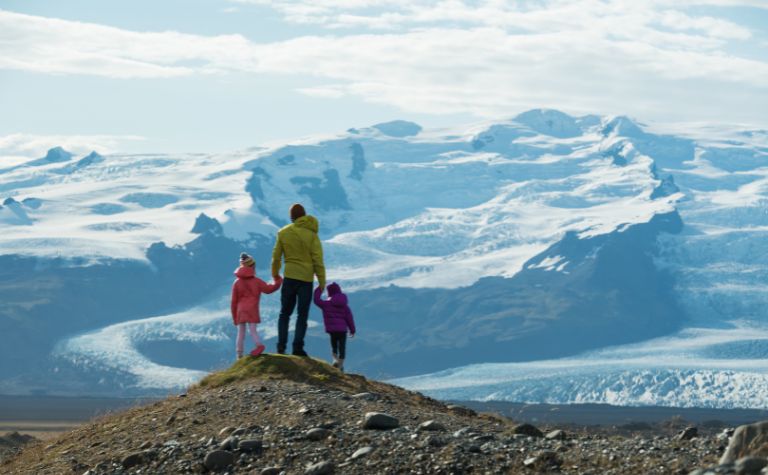From cultural heritage to natural wonders, there are several reasons why Iceland is one of the most popular tourist destinations among the Nordic countries.
The country’s natural wonders are why it is known as the “Land of Fire and Ice.” As such, there’s a lot to do in Iceland.
Visitors to Iceland can go whale-watching, skiing, snorkeling, and river rafting, or take snowmobile tours on the country’s glaciers.
People can also experience the hot spring culture of the country, explore the many natural parks, visit volcanoes and ice caves, and go on Viking-themed tours.
In Iceland, people can observe whales throughout the year, and visitors often have a good chance of encountering blue whales. [1]
Being an island country filled with glaciers, Iceland offers visitors access to many water-based activities, especially river-rafting in the many glaciers present in the country.
The country’s Viking heritage is also accessible to visitors through the numerous activities and locations based on this heritage.

What Cultural Experiences Can Tourists Have in Iceland?
Iceland’s Viking heritage is an important part of its culture and a great part of the experiences offered to visitors.
Another important tradition is the culture of bathing in the many geothermal pools of the country.
Tourists in Iceland can have cultural experiences like going on Viking-themed boat tours and visiting the Viking museums.
Tourists can also bathe in the Blue Lagoon or the Mývatn, explore the theaters and galleries in Reykjavík, and eat Icelandic food.
In addition to the park, several museums like the Viking World Museum, the Saga Museum, and the Settlement Exhibition offer a glimpse into the Viking Age.
These are excellent spaces for tourists to immerse themselves in the history of the Icelandic people and their Viking heritage.
There are several Viking-themed activities, from drinking Viking beer to experiencing a Viking Village Festival or even going on a Viking Sushi Boat Tour.
Bathing in Icelandic hot springs is important to the country’s culture.
Visitors are encouraged to bathe in the Blue Lagoon, which is arguably one of the most famous geothermal spas in the country.
There are a number of popular hot springs around Lake Mývatn.
The Mývatn Nature Baths are designed to contain naturally heated water in a comfortable space for people to bathe.
The water itself is heated naturally, but the baths are man-made.
Icelandic food and cuisine are well-known worldwide for being fresh and unique.
Lamb and fish are the most commonly eaten meat in the country, and the focus is always on getting the best ingredients available.
Foodies travel a long way to try the fermented foods of Iceland, including the Harkal or fermented shark.
Other common traditional meals are soups or stews that are perfect for the country’s climate.

What Natural Places in Iceland Are Worth Visiting?
Iceland is primarily known for its natural beauty, and most people visit the country for its opportunities to observe wildlife in a pristine, untouched habitat.
Icelandic authorities also work towards promoting ecotourism in the country. [2]
In addition to the many glaciers, the country is full of active volcano systems, and visitors can watch this natural phenomenon if they are present when an active volcano erupts.
Natural places in Iceland worth visiting include Husavik and Snaefellsnes Peninsula for whale watching and the Golden Circle stretch to explore natural parks, waterfalls, and geysers.
Other places include Lake Mývatn’s volcanic landscapes and the stunning ice caves inside the country’s glaciers.
A lot of whale-watching tours in Iceland also start from Reykjavik, but the Husavik village describes itself as the “whale-watching capital of Europe.”
The village is beautiful and has an interesting whale museum worth a visit.
The Golden Circle is an important tour for any visitor to Iceland as the area includes the Þingvellir National Park, which is also a historically and culturally important region.
Additionally, the area includes Geysir, the oldest geyser and the origin of the term itself.
Located in the Haukadalur Valley, Geysir is surrounded by a number of geothermal springs and other geysers like Strokkur, which erupts every few minutes.
The Gullfoss waterfall is an iconic waterfall in Iceland and is usually included in all Golden Circle tours.
Lake Mývatn is one of the largest lakes in Iceland and part of the Diamond Circle tour, which includes Husavik as well as the large lava rock stacks and caves of Dimmuborgir.
The ice caves in Iceland can only be visited in the winter.
These caves are found in the country’s glaciers and are one of the most compelling natural sights in Iceland.
The biggest and most popular cave is the natural one in the Vatnajökull glacier.

What Historic Places are Good to Visit in Iceland?
Iceland’s history is tied inexorably with its landscapes and natural wonders.
The tectonic movements and geothermal activities that defined the shape of the country also influenced its history and culture, including its Viking heritage.
Historic places that are good to visit in Iceland include the Þingvellir National Park and the ruins at Gufuskálar.
Other locations of historical interest include the Gasir medieval market and the meteorological station at Stykkishólmur.
Þingvellir is an important site of cultural importance to Iceland and the world. The site was the center of Icelandic culture and the location of the Althing, the Icelandic parliament. [3]
The main area of interest at this National Park is the area where the parliament used to assemble.
Gufuskálar is an archeological site believed to be a fishing site from the late medieval era. [4] Gasir is also an important archeological site that used to be a trading center.
If visiting in July, tourists are able to experience the site through a recreation of the medieval market.
Once a fishing village, Stykkishólmur is a natural harbor.
The meteorological station is Iceland’s oldest one and was set up in 1845. Stykkishólmur is full of wooden buildings and museums and is a good location to find handicrafts by local artisans.
Conclusion
There is a lot to do in Iceland, including whale-watching and exploring natural wonders like volcanoes, geysers, ice caves, and several archeological sites.
